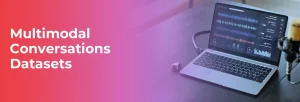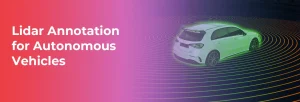- Understanding Data Annotation in Surveillance
- Importance of Annotated Data in AI Security Camera System Training
- Types of Annotations Used in Security and Surveillance
- Applications of Data Annotation in Security & Surveillance
- Real-Life Case Studies
- Challenges in Security Data Annotation
- Tools and Technologies Used
- Best Practices in Security Data Annotation
- Future Trends in Security & Surveillance Annotation
- Why Choose Macgence As a Data Annotation Partner
- Conclusion
- FAQs
Data Annotation for Security and Surveillance: AI Security Camera Training Data
In an era where artificial intelligence is transforming industries, Data Annotation for Security and Surveillance plays a pivotal role in reshaping how we safeguard people, properties, and infrastructure. From facial recognition and intrusion detection to anomaly detection in crowded spaces, annotated data is the backbone that trains intelligent surveillance systems to detect, analyze, and respond to real-time threats accurately.

This article explores the vital role data annotation plays in training AI security camera systems, outlines its applications, benefits, methods, and challenges, and highlights real-life case studies that demonstrate its impact. If you’re in the security technology business, system integration, or a government agency, understanding this field is essential for deploying reliable AI-driven security solutions.
Understanding Data Annotation in Surveillance
What is Data Annotation?
Data annotation refers to the process of labeling raw data—images, videos, audio, or sensor data—to make it understandable for machine learning algorithms. In security and surveillance, this typically involves tagging footage with labels like “person,” “weapon,” “unauthorized access,” or “suspicious behavior.”
Why Does It Matter?
AI models used in surveillance require AI Security Camera System Training Data to learn and make accurate predictions. Without precise annotations, these models may fail to detect threats, leading to security breaches.
Importance of Annotated Data in AI Security Camera System Training
Modern security systems depend on machine learning and computer vision algorithms. These models require high volumes of high-quality labeled data to:
- Detect suspicious objects or people.
- Recognize specific behaviors or motion patterns.
- Trigger alerts in real-time.
- Reduce false positives.
Benefits:
- Accuracy: Better data improves model precision.
- Efficiency: Speeds up response times.
- Cost-Effectiveness: Reduces reliance on manual monitoring.
Types of Annotations Used in Security and Surveillance
| Annotation Type | Technique | Security Use Case Example |
|---|---|---|
| Image/Video | Bounding Box, Polygon | Detect people, weapons, intrusions |
| Image/Video | Semantic/Instance Segmentation | Crowd control, area monitoring |
| Image/Video | Keypoint/Landmark | Human posture detection |
| Audio | Sound Event Labeling | Detect threats via sound |
| Audio | Speaker Diarization | Separate speakers during surveillance |
| Text | NER, Sentiment Analysis | Threat detection in communications |
| Multimodal | Timestamp, Fusion Annotation | Combine sensor + camera data |
| Behavioral | Activity, Trajectory | Detect loitering, fleeing, violence |
| Face/Identity | Landmark, ID Tagging | Detect loitering, fleeing, and violence |
Applications of Data Annotation in Security & Surveillance
1. Facial Recognition
Facial annotation helps train models to recognize and verify identities in airports, stadiums, or secured facilities.
Use Case: Identifying blacklisted individuals in real-time.
2. Crowd Monitoring
Detecting anomalies in crowd movement helps prevent stampedes or terrorist activities.
Use Case: Annotated footage enables the detection of abnormal movement patterns in public rallies.
3. Intrusion Detection
Bounding boxes around moving entities help identify unauthorized access or breaches.
Use Case: Perimeter surveillance for restricted areas.
4. Weapon Detection
Semantic segmentation highlights objects like guns or knives in a crowd or within premises.
Use Case: School surveillance systems or airport security.
5. License Plate Recognition
Image annotation allows models to recognize vehicle numbers even in poor lighting or from angles.
Use Case: Monitoring stolen vehicles or traffic violations.
Real-Life Case Studies
Case Study 1: London Metropolitan Police – Facial Recognition
Challenge: Increasing crime rates and the need for faster identification.
Solution: The police used facial recognition models trained on annotated image datasets.
Outcome:
- 70% reduction in search time.
- 85% identification accuracy.

Case Study 2: Dubai Smart City Project – AI in Public Surveillance
Challenge: Managing security in public spaces with high footfall.
Solution: Annotated video datasets were used to train AI-powered surveillance systems for anomaly detection.
Outcome:
- 24/7 monitoring without manual supervision.
- Significant drop in petty crimes.

Case Study 3: School Surveillance in the USA
Challenge: Detecting weapons and unusual student behavior.
Solution: Data annotation services labeled thousands of classroom and hallway videos to detect weapons and aggressive behavior.
Outcome:
- Real-time alerts helped prevent incidents.
- Enhanced school safety protocols.

Challenges in Security Data Annotation
1. Privacy Concerns
Handling footage that involves real people raises privacy issues and requires compliance with GDPR, HIPAA, etc.
2. Edge Cases
Rare events (e.g., terrorist attacks) are difficult to annotate due to a lack of data.
3. Scalability
Massive amounts of video footage require extensive human resources for accurate labeling.
4. Accuracy & Consistency
Inconsistent labeling affects model performance. Maintaining annotation quality across large teams is difficult.
Tools and Technologies Used
| Tool Name | Features | Ideal For |
|---|---|---|
| Macgence | Offers automation + human-in-the-loop. | Smart labeling in dense scenes. |
| CVAT | Open-source, supports video annotation, and collaborative tools. | Surveillance footage labeling. |
| Labelbox | Scalable and cloud-based analytics dashboard. | Enterprise-level annotation. |
| VIA (VGG Image Annotator) | Lightweight, browser-based. | Lightweight security image tagging. |
Best Practices in Security Data Annotation
- Use domain experts: Annotators should understand surveillance footage nuances.
- Implement QA workflows: Validate annotations with regular quality checks.
- Leverage pre-annotations: Use AI to make first-level labels and then manually refine.
- Ensure data diversity: Include footage from different times, lighting, weather, and locations.
- Follow legal and ethical guidelines: Mask personal identities where required.
Future Trends in Security & Surveillance Annotation
1. Synthetic Data Generation
Creating synthetic but realistic footage for edge-case scenarios like break-ins or hostage situations.
2. Federated Learning
Training models without moving data—ideal for privacy-sensitive environments like hospitals or airports.
3. Real-Time Annotation with AI
Hybrid systems where AI assists human annotators in real-time, speeding up the process drastically.
4. Predictive Surveillance
Future AI models might predict crimes before they occur, based on behavioral patterns learned from annotated historical data.
Why Choose Macgence As a Data Annotation Partner
Choosing the right annotation partner determines your AI security success. Use this strategic evaluation framework to evaluate Macgence’s offering:
Data Security & Compliance Infrastructure
- ISO 27001 certification with annual third-party audits.
- GDPR/CCPA compliance backed by documented, auditable processes.
- Air-gapped annotation environments tailored for highly sensitive footage.
- Comprehensive NDAs, including liability coverage and breach protocols.
- Multi-factor authentication & end-to-end encryption across all data flows.
Domain-Specific Expertise
- Proven track record with AI Security Camera System Training Data.
- Deep understanding of security threat taxonomies and industry regulations.
- Familiarity with a wide range of surveillance hardware (IP, thermal, fisheye).
- Expert knowledge of privacy requirements across APAC, EMEA, and the Americas.
Scalability Architecture
- Demonstrated capacity for 10,000+ hours of video annotation per quarter.
- Distributed global workforce managed through unified dashboards.
- Rapid team ramp-up for urgent, high-volume projects.
- Flexible resource allocation—scale up or down without sacrificing quality.
Quality Assurance Methodology
- Multi-layer human verification: spot checks, consensus review, adjudication.
- Statistical validation protocols with real-time performance tracking.
- Continuous improvement loops: deployment feedback → annotation guidelines.
- AI-assisted QA tools to ensure consistent labeling at scale.
Technical Integration Capabilities
- API-first architecture for seamless workflow integration.
- Support for industry-standard output formats (COCO, Pascal VOC, YOLO, JSON).
- Real-time annotation feedback systems to accelerate model retraining.
- Full compatibility with MLOps pipelines (Kubeflow, MLflow, SageMaker).
Conclusion
Data Annotation for Security and Surveillance is no longer a backend task—it’s a strategic necessity for developing robust, intelligent, and trustworthy AI surveillance systems. With the increasing demand for real-time monitoring, smart cities, and automated threat detection, the quality and scale of annotation will significantly impact the success of AI implementations in this space.
Whether it’s training an AI Security Camera System with annotated training data, detecting anomalies in crowded events, or deploying facial recognition for border control, the effectiveness of your AI model is only as good as the data it learns from.
Businesses, governments, and security agencies must invest in high-quality, ethically sourced, and accurately labeled datasets to stay ahead in a world where security threats evolve faster than ever.
FAQs
Urban infrastructure, transport hubs, retail, logistics, banking, and energy all see strong returns. These sectors demand real-time, reliable threat detection.
Absolutely, AI can assist, but human input ensures subtle behaviors are recognized and real-world context is preserved.
Yes, Archived footage often mirrors live conditions more accurately than synthetic data. Proper annotation makes it a powerful asset.
Leading providers use strict controls—multi-layer reviews, expert checks, random audits, and feedback from system performance.
You Might Like
October 11, 2025
Why Your AI Can’t Understand Humans: The Multimodal Conversations Datasets Gap
Your conversational AI is failing, and you probably don’t know why. It responds to words perfectly. The grammar checks out. The speed is impressive. But somehow, it keeps missing what users actually mean. The frustrated customers. The sarcastic feedback. The urgent requests are buried in casual language. Here’s what’s really happening: your AI is reading […]
October 10, 2025
Why Your Self-Driving Car Needs Perfect Vision: The LiDAR Annotation Story
Imagine you’re driving down a busy street. Your eyes are constantly scanning – pedestrians crossing, cars merging, cyclists weaving through traffic. Now imagine teaching a machine to do the same thing, except it doesn’t have eyes. It has lasers. And those lasers need to understand what they’re “seeing.” We’ve seen many product launches that aim […]
October 9, 2025
What is Synthetic Datasets? Is it real data or fake?
Picture this: You’re building the next breakthrough AI product. Your models need millions of data points to learn. But there’s a problem. You can’t access enough real-world data due to various factors, such as compliance issues, security factors, and specific needs. Privacy regulations block you. Collection costs are sky-high. And even when you get data, […]




